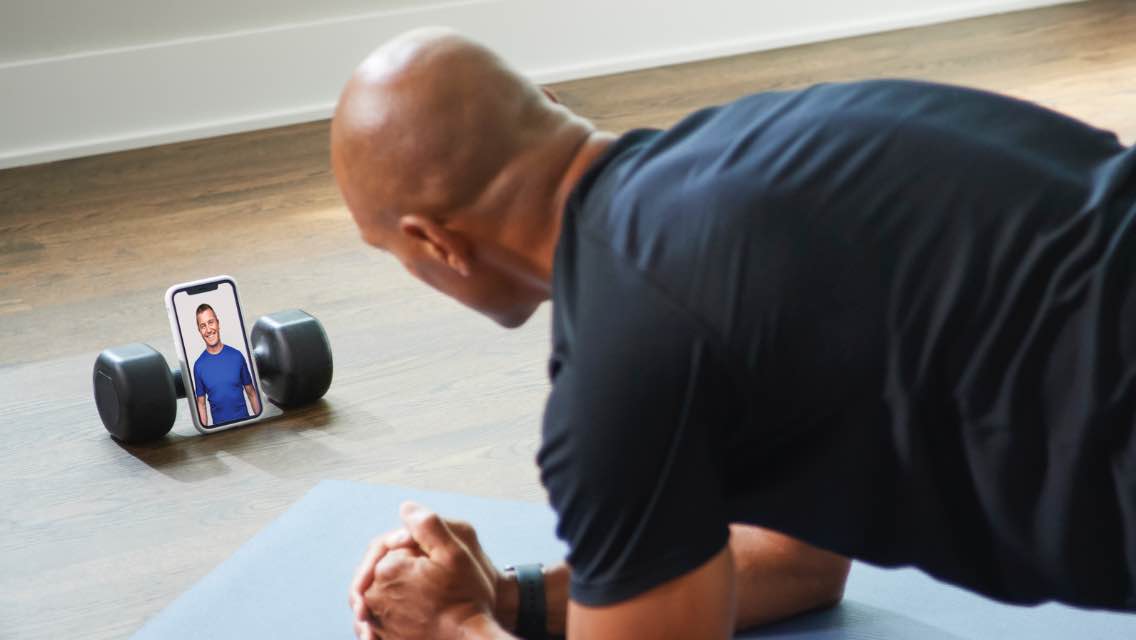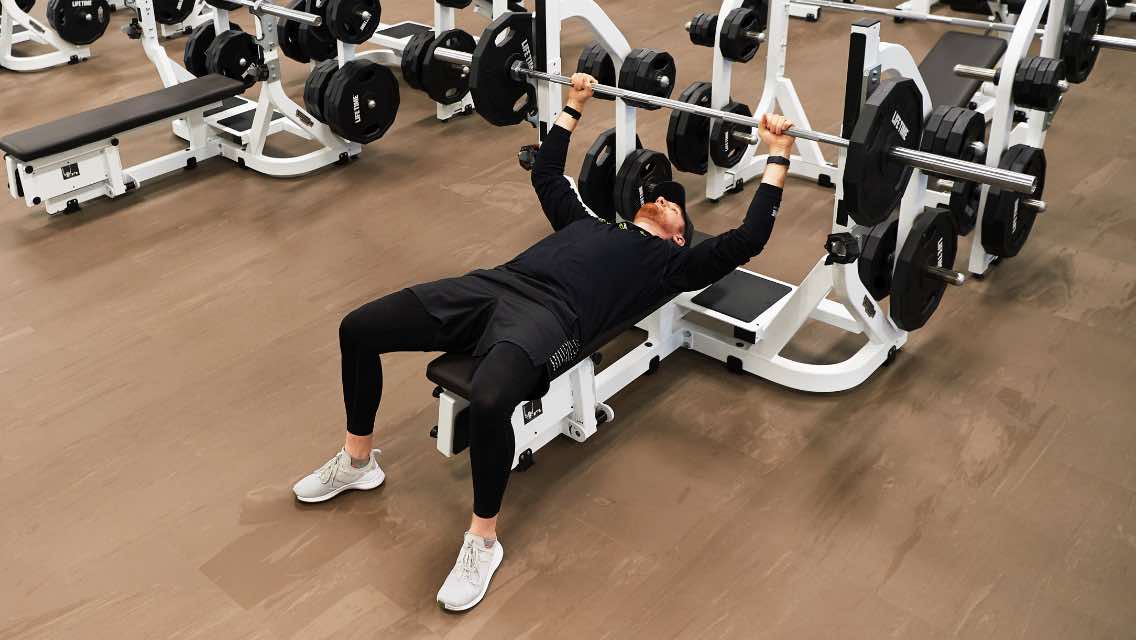In the last year, so many aspects of life have changed: work schedules, social norms, family time, health practices, and how and where we maintain our fitness regimen.
No matter what your personal situation or health club landscape looks like, it’s never been more paramount to your health to ensure consistency in your exercise and physical activity routine. It’s crucial for a bolstered immune system, increased resilience, and balanced mental health.
Thankfully, the popularization of virtual training has made a consistent workout program feel within reach again for many. Various digital options — whether it be workouts guided through an app, classes live streamed into your home, or personal training with a fitness professional through a screen — are convenient and widely accessible, but also very new.
If you’ve been on the fence about trying virtual training and how to approach it, use the tips below to prepare for your first session with confidence.
1. Clear out a dedicated space.
When you’re used to a large facility with top-of-the-line equipment, it can be hard to imagine getting a great workout done at home. So much of the quality of your workout goes back to mindset — and your physical environment is incredibly important for getting your head in the game.
Unless you have a home gym, the mental association we have with each room in our house probably has nothing to do with exercise. But a few quick room transformations can make all the difference:
- Use a few storage baskets. When you have clutter (from kids’ toys, pets, or your own belongings), it makes it harder to perform different workout moves more freely. But it might feel unrealistic to permanently declutter a space or change it to solely serve as a workout area. Instead, get a large decorative storage basket or two. Before your workout starts, toss any small items that might be in your way into the basket to keep the area clear.
- Move small furniture and appliances. Any easy-to-move chairs, nightstands, lamps, or appliances might be easy to run into or knock over once you get your blood pumping and workout going. If possible, move them to one side of the room to give yourself a few extra feet of space to create a buffer area for a larger range of motion through your movements.
- Get adequate lighting. If you’re in a basement or side room, the dim setting might be a little too calming and make it harder to see what you’re doing. If the sun is out, try opening the shades and blinds, or turn on the overhead lights and adjust any floor lamps to make sure your space is bright and ready for you to get moving.
2. Dress for success.
Along the same lines as your room environment, wearing workout clothes consistent with what you’re used to exercising in can help provide mental cues that increase your readiness to train. They can function as yet another external trigger for exercise and get you into the flow of a new routine.
You don’t have to be runway-ready, just stick with activewear that is comfortable, has the right amount of stretch, and that is not too loose as it could interfere with movements. Have a clean sweat towel or two available to use if needed as well.
3. Set up a phone, tablet, or laptop spot.
Since you’re not exercising with live, in-person instruction, it will be critical to have a clear view of your screen. But holding your screen while doing each movement, trying to get a good view with it lying on the floor, or picking it up to take a close look between exercises might get tedious and lead to an ineffective, clunky flow through your routine.
- Make sure you can see the screen. This might sound obvious, but it’s helpful to test ahead of time. If there’s no sturdy shelf or spot to place your device, invest in a docking station. There are both wall-mounted and standalone options available. You’ll want to ensure you can clearly see your screen at eye level.
- Be certain your trainer can see you. Take the opportunity ahead of time to switch on your camera and adjust its placement to ensure its optimal. Your body positioning should be viewable to your trainer when you’re standing, sitting, and lying down to get the best coaching and virtual form correction throughout your session.
- Consider a mirror. As an optional bonus, see if you can set up a full-length mirror near the camera so that you can see yourself performing the movements from the same angle that your trainer sees you. One of my former clients swore by this method, and she found a cost-effective, over-the-door mirror designed for dorm rooms that she simply propped up against the wall.
Pro tip: If you have a smart TV, you can cast the app to your TV for your training session, or use screen mirroring or leverage Airplay for a video workout. If you don’t have a smart TV, using Bluetooth speakers with your phone or device to amplify the sound can help ensure clear back-and-forth communication and instruction during your session.
4. Fuel up and stay hydrated.
No matter where you’re exercising, pre-workout nutrition is critical to providing you with sufficient energy to fuel your session without contributing to nausea or a feeling of heaviness while you’re exercising. Be sure not to neglect preparing with this step when working out virtually.
- If you have two hours or more before your workout, you can eat a full, balanced meal with protein, healthy fat, and a starch.
- If you are within the two-hour window, it might be best to stick with low-fiber foods or liquids only, such as a protein shake.
- If you’re within a 30- to 60-minute window of your workout, stick with just liquids, such as a Generation UCAN starch dissolved in water.
You also want to head into your workout well-hydrated with water, since even slight dehydration can contribute to muscle tissue breakdown, reduce testosterone after weight training, and can negatively impact your strength and stamina in a workout. Have a bottle of water nearby and ready to use during your training.
As a rule of thumb, aim for half of your goal body weight in ounces of water per day, and an additional 16 to 24 ounces per hour of exercise, or as-needed to replace any losses through sweat.
Wrapping Up
Anytime you’re trying something new, there can be mental barriers, rooted fears, and perceived limitations to getting started. We’re on a mission to make sure that those patterns of thinking don’t hold you back from experiencing the life-changing, protective benefits of regular exercise.
Whether you’re a beginner or have extensive exercise experience, we have expert trainers available to help you virtually — and we’re here to help ensure you’re ready and confident to start and maintain an effective, transforming program.
Join us by taking this quiz to find the right virtual program for you.




